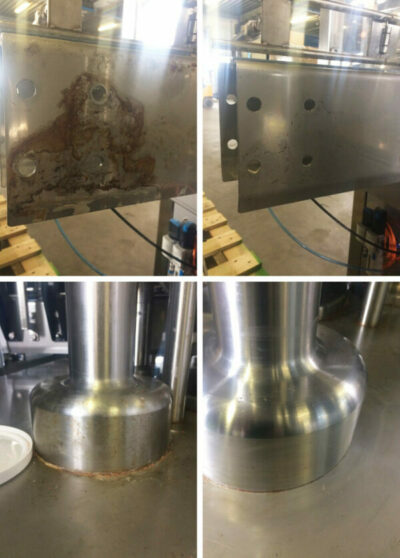Pay safely and quick with iDeal
Pay safely and quick with iDeal
The name stainless steel (inox) is not entirely accurate, because stainless steel certainly can rust. Stainless steel has a restorative capacity and a protective layer that can regenerate, but under certain circumstances rust spots may still appear. This happens, for example, when the material comes into contact with chlorine. Rust can also develop when there is contact with ordinary steel. There are various types of stainless steel. This is reflected in the number designation, for example 304 stainless steel. This is the most common type of stainless steel. Everything you see in kitchens, toilets and bathrooms is grade 304. Stainless steel is steel with increased resistance to corrosion. Stainless steel is widely used in the machinery, petrochemical and offshore industries. Good maintenance is important to prevent rust.

Stainless steel cleaner is used to clean stainless steel, to polish it, to remove rust or ‘tea stains’ and to protect the steel from corrosion. The use of aggressive cleaning agents can damage the oxide skin of stainless steel. This leads to discolouration or even rust formation. In industries and workshops where welding is done, aggressive cleaning agents such as pickling liquor are also used to remove the discolouration from welds. This often causes the stainless steel to become a lighter colour in the treated area. Eco-Point has developed safer alternatives for cleaning stainless steel, such as Nutrifoam Plus.